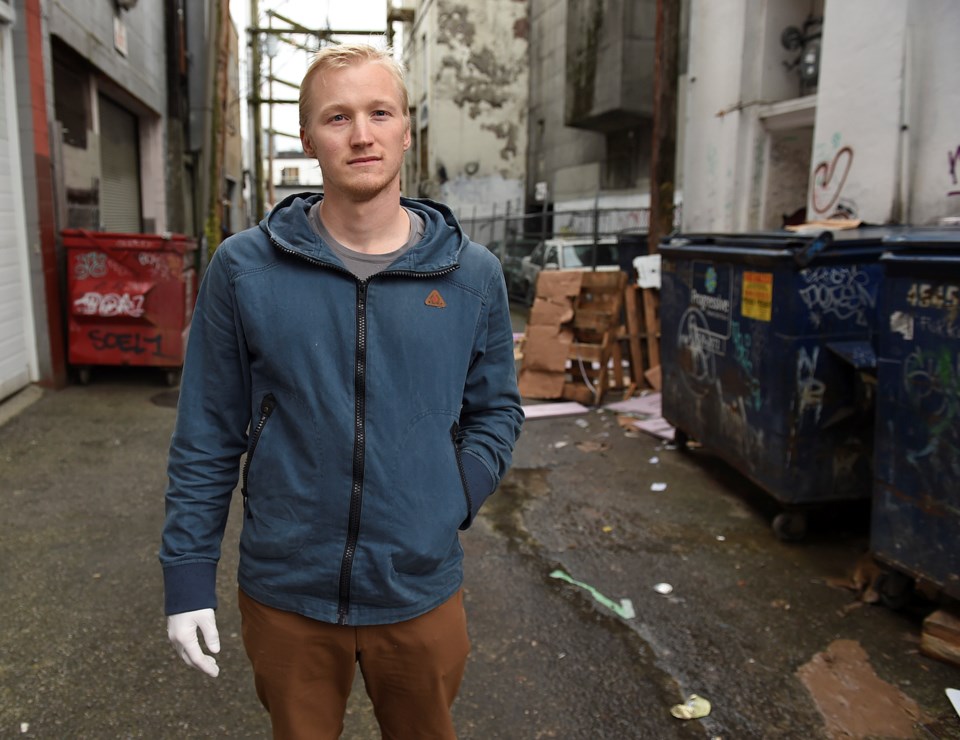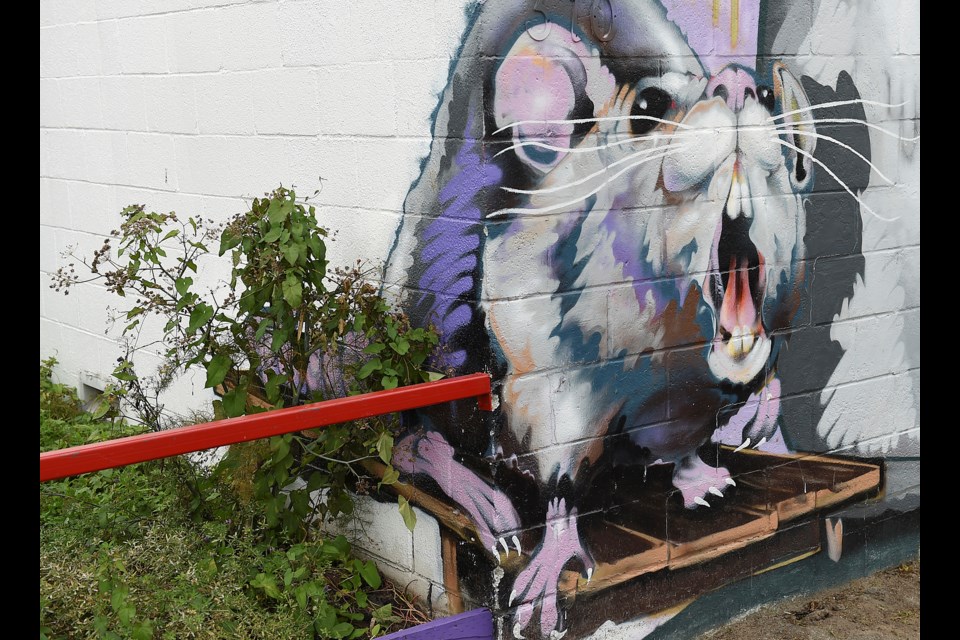If you’re wondering whether Vancouver’s rat population is increasing or decreasing, keep wondering. At least for now.
It’s difficult to pin down their numbers because there’s no systematic surveillance of rats — a situation that could change in coming years as UBC grad student Michael Lee prepares to fill the gap by designing a rat surveillance program.
Lee is doing it for his PhD in the School of Population and Public Health at UBC, which he begins in September 2017, and for submission to the City of Vancouver, which has shown interest in possibly implementing such a project.
Current city statistics are based on who calls the city’s 3-1-1 contact centre. They include all calls containing the keywords rat, rodent, mouse and mice to identify trends, rather than being broken down individually. (The city also offers advice on its website about how to deal with rodents.)
In 2015, the city recorded 1,047 rodent-related cases, compared to 710 in 2016, up to August 31. Comparing the same period between Jan. 1 and Aug. 31 in 2016 to the previous year, there was a five per cent decrease in calls.
Vancouver Coastal Health, meanwhile, tracks pest complaints at food service establishments. Those numbers include rats and mice, as well as insects such as cockroaches, ants and flies and other types of animals such as birds.
VCH started using a new tracking system last year near the end of April. From May 1 to Oct. 21, 2015 there were 84 pest-related complaints in Vancouver food establishments, compared to 101 during the same period in 2016. Although complaints increased, it’s not statistically significant because the numbers are relatively small considering the number of food service establishments in the city.
While the City of Vancouver and VCH collect these statistics, people likely don’t always call about rat or other rodent sightings because they’re not unusual around the city. The data might also be skewed by increased calls after rat or rodent problems hit the headlines.
Catch and disease
Lee’s involvement in rat research has centred on the Vancouver Rat Project (VRP), founded by UBC professor Dr. Chelsea Himsworth.
In 2012, Himsworth launched the VRP, which involved catching as many rats as possible in the Downtown Eastside to see what diseases they had, and what risk that posed to society. Himsworth found diseases that rats had were clustered by city block — some city blocks would have really high levels of disease and other city blocks wouldn’t have any disease.
“What it suggested to her was that rats in different city blocks really don’t interact with one another,” Lee told the Courier. “So when rats in one city block get a disease, they only transmit it to rats within that city block and they never give it to ones in surrounding blocks.”
Lee, who’s now working on his master’s degree in public health at UBC, and PhD student Kaylee Byers, are currently involved in field work to further Himsworth’s research.
They’re assessing the effects of trapping and removal of rats on disease transmission — how levels of disease change in response to trapping.

“We know that rats are really social creatures, [so] if we removed the dominant male in the group, what happens to the typical social patterns? Do rats leave those city blocks and bring their disease elsewhere or do rats [from other blocks] come in and try and take over the now vacant resources and get the diseases that way.”
The pair began trapping rats on the East Side between Abbott Street and Clark Drive last June and expect to finish their fieldwork in January.
“We’ve seen a pretty stable rat population the whole time. There just seems to be a lot of rats,” said Lee, who explained it’s important to know how trapping affects disease spread in order to determine how to best implement pest control.
“If our method of pest control is to just go kill rats all over the place in a case-by-case basis, and we increase disease spread, that’s really important because we don’t want to do that. We don’t want to increase disease spread, so we’ll have to work on changing how we do pest control.”
Measured approach
Once the disease study is completed, designing a rat surveillance program is next on Lee’s priority list. He recently submitted a preliminary proposal to city staff for review. It suggests, as a first step, a literature review of all the techniques used around the world to see what ones might work in Vancouver.
The city had approached the Canadian Wildlife Health Cooperative (CWHC) —Canada’s surveillance program for wildlife and wildlife diseases about such an initiative. The VRP operates under the CWHC, which led to Lee’s involvement.
“The only way to measure if a rat population is changing over time is to measure it — time A and then measure time B and see if it increased or decreased or didn’t change at all,” he said. “And, at the moment, we don’t have any real information. We have the reporting systems and [reports] to pest control companies, but an increase in reporting doesn’t really mean that there’s more rats. It’s perhaps just because [people] saw a news article and they’re looking for rats.”
It will take a lot of effort to get a comprehensive surveillance program that uses pest control in a proactive way up and going, but it’s much more cost effective over the long term, according to Lee.
“Right now, we have a case-by-case approach where somebody calls in rat complaints and maybe the city deploys pest control, but you kill some and rats survive elsewhere, so they recolonize the area,” he said.
“The biggest problem right now is we send resources towards the complaints and ignore everywhere else, whereas if we do this citywide surveillance program, we can better allocate resources and deal with rat [problems] before they occur. The first step is to know where rats are.”
Lee expects it will take several years to develop the program, at which time it will be up to the city to implement it or not.
“[But] the surveillance piece is really important for starting the city into working towards dealing with the rat problem,” he said.
@naoibh



